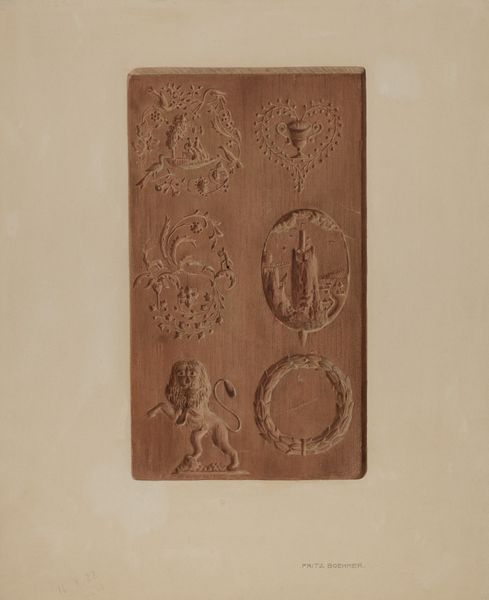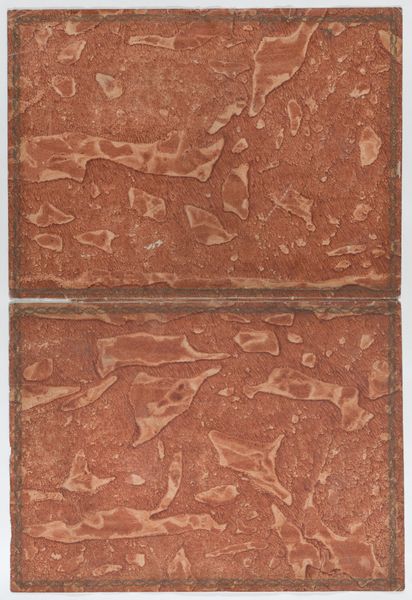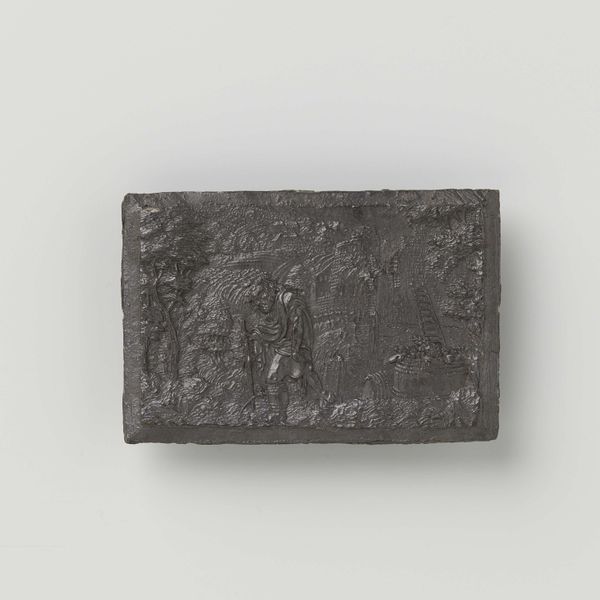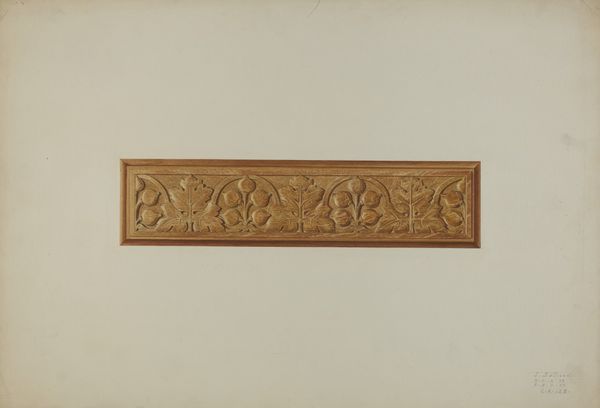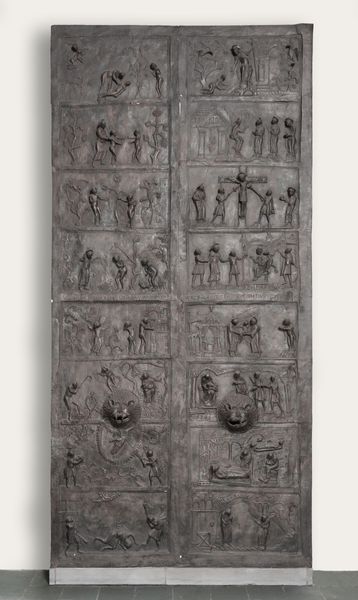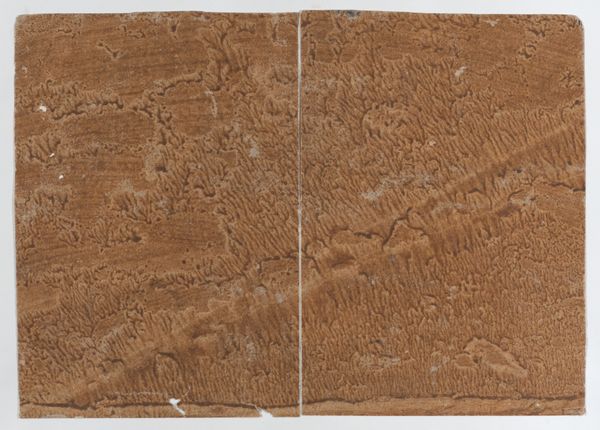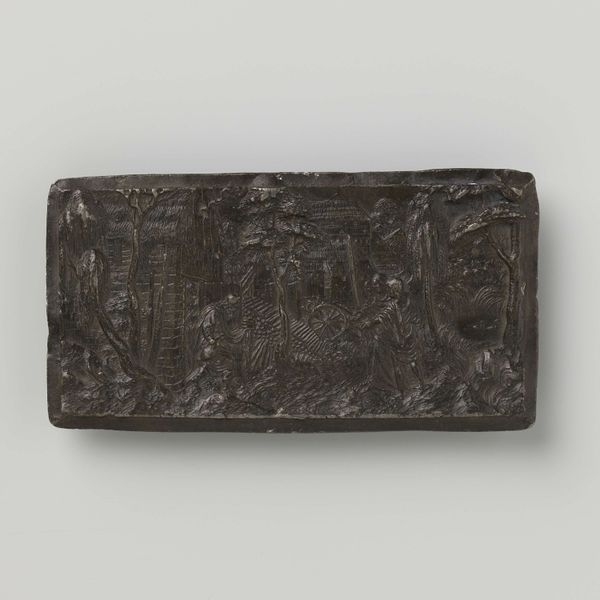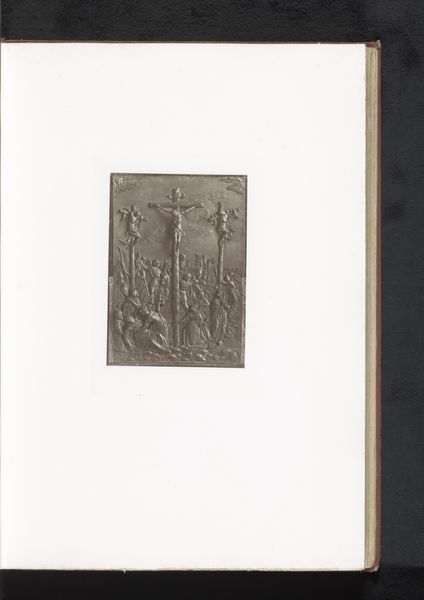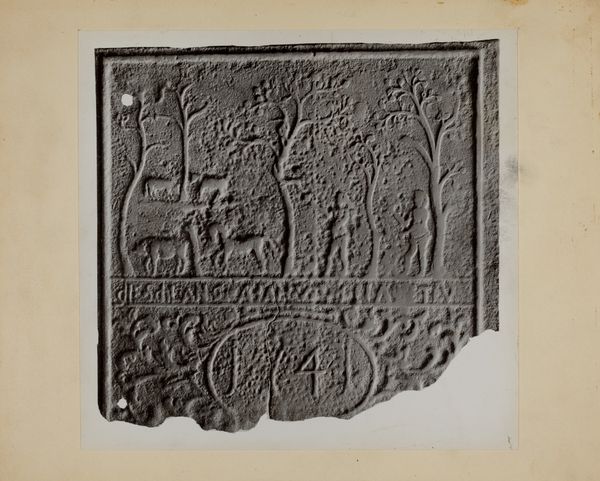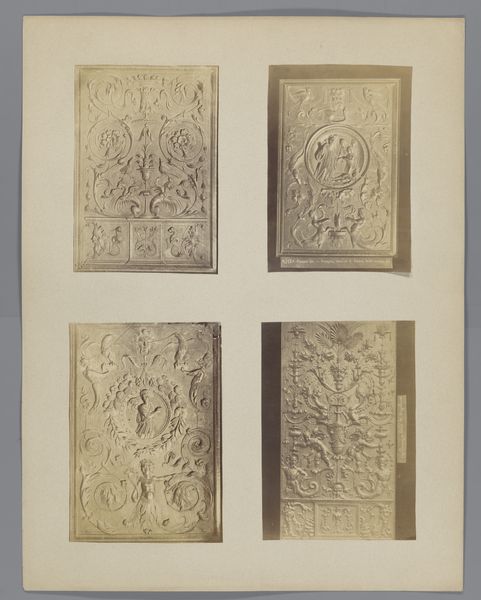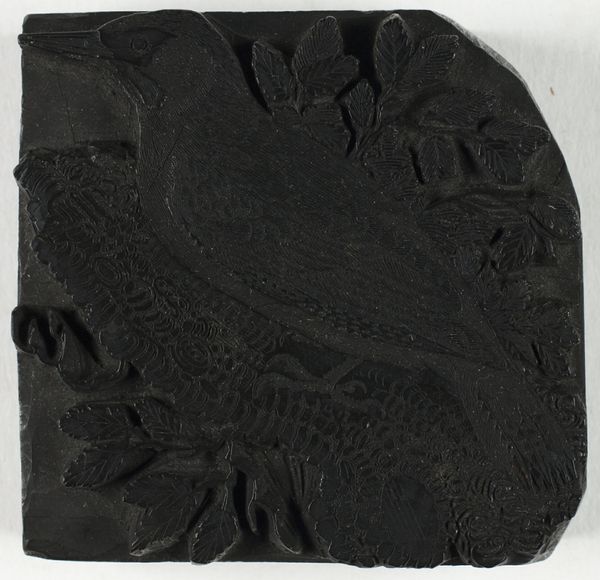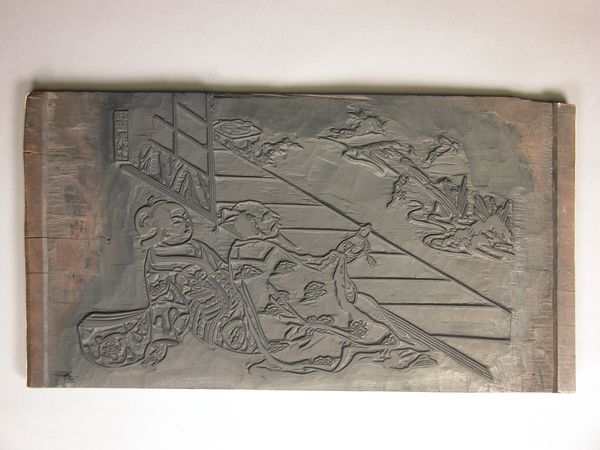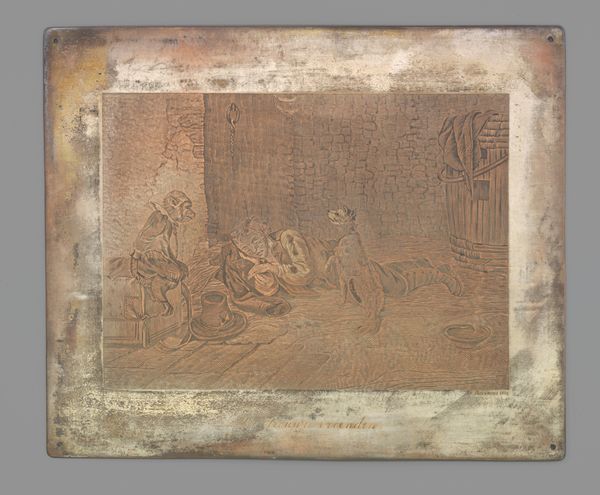
carving, relief, wood
#
natural stone pattern
#
carving
#
relief
#
folk-art
#
geometric
#
wood
#
decorative-art
Dimensions: overall: 45.6 x 35.8 cm (17 15/16 x 14 1/8 in.)
Copyright: National Gallery of Art: CC0 1.0
Curator: This is a springerle board for Christmas cakes. Fritz Boehmer, its creator, fashioned this fascinating piece of folk art around 1939. The primary materials are wood and, impressively, carved in relief. Editor: Immediately, I see this matrix of tightly packed folk motifs as a form of visual storytelling rooted in community ritual. The uniform texture feels grounded, earthy—inviting touch. Curator: Precisely. The visual lexicon invites a return to almost pagan archetypes—consider the squirrel, the owl, the hunter. It speaks of human connection to nature and the symbolic narratives attached to animals. Editor: It reminds me of the resurgence of interest in pre-Christian symbolism throughout the early 20th century. Perhaps Boehmer saw in this imagery a chance to reimagine and connect to collective traditions, specifically through food. Curator: Undoubtedly, gingerbread, cake—they all symbolize sharing and continuity, especially significant amid the turmoil preceding World War II. Each symbol, then, resonates beyond its immediate form, pointing towards deeply rooted values and the desire for normalcy and togetherness. Editor: It's interesting how Boehmer reclaims symbols, almost ritualistically. Each stamp becomes a small act of cultural preservation, reclaiming tradition against looming political disruption and uncertainty. Curator: Right. Baking traditions offered solace but also were about sustaining connections to heritage through generational transfer of knowledge. Springerle cookies aren't simply made; they’re legacies shaped in flour. Editor: Yes! Looking closely at the figure with a bow and arrow—is that supposed to represent a particular figure from folklore? How was a character like this reinterpreted in the face of nationalism? Did it promote harmony or assert dominance? Curator: I see him perhaps representing Saint Sebastian, an enduring figure who ties into survival, fortitude. That, nestled amongst grapes symbolizing abundance, presents a potent dialogue—sustenance through suffering. Editor: Well, I will consider dessert with more intent next time, viewing it through both historical and symbolic lenses. It’s a deceptively rich slice of social and cultural history—pun intended! Curator: Agreed; a blend of nostalgia and symbol creates something beyond decorative. Each press imprints hope and enduring community values onto fragile confections, echoing through time.
Comments
No comments
Be the first to comment and join the conversation on the ultimate creative platform.
